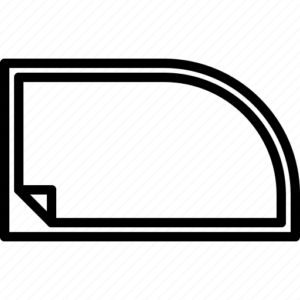FAQ

Tinting
“A: Most window tinting jobs are completed within 1-2 hours, depending on the vehicle and the number of windows.”
“A: Quality window tinting can enhance your car’s resale value by protecting the interior from UV damage, reducing wear and tear, and maintaining a sleek appearance.”
“A: Yes, we offer a warranty on our window tinting services, which covers issues like bubbling, peeling, and fading. The duration and terms of the warranty depend on the specific film used.”
“A: Yes, we offer tint removal services. Our team can safely remove old or damaged tint and replace it with new film to ensure a fresh, clean look.”
“A: Dyed tint is created with a layer of dye to absorb heat and block light. Metalized tint has a thin metallic layer that reflects heat and UV rays. Metalized tint tends to be more durable and effective in heat reduction but can interfere with electronic signals.”
“A: Absolutely. Window tinting blocks harmful UV rays that can cause fading and cracking of your car’s interior surfaces, thereby preserving the look and feel of your vehicle’s interior.
“A: Our team can help you choose the right level of tint based on your preferences, legal requirements, and the specific benefits you are looking for, such as UV protection, privacy, or heat reduction.”
“A: Yes, window tinting can help improve fuel efficiency by reducing the need for air conditioning. By blocking heat from entering the car, your air conditioning system won’t have to work as hard, potentially saving fuel.”
“A: Yes, both window tinting and PPF can be applied to leased vehicles. They can be removed at the end of the lease term without damaging the vehicle, making them a great option for protecting your investment.”
“A: Ceramic window tint is made with ceramic particles that are nonconductive and nonmetallic. It offers superior heat rejection, UV protection, and clarity compared to other tints. Carbon tint contains carbon particles that block infrared light, reducing heat and providing a matte finish that won’t fade over time.”
“A: Yes, avoid using ammonia-based cleaners on tinted windows as they can damage the tint film. Use a soft cloth and a mild cleaner instead. Also, be cautious when using window scrapers or any abrasive tools.”
“A: We recommend waiting at least 48 hours before rolling down your windows to ensure the tint film has properly adhered to the glass.”
“A: Small bubbles are normal during the initial curing process and usually disappear within a few days to a week. If bubbles persist beyond that, please contact us for an inspection.”
“A: Yes, we also offer window tinting services for residential and commercial properties. Tinting can improve energy efficiency, privacy, and comfort in your home or office.”
“A: Our experienced technicians are familiar with Virginia state laws and will ensure that your window tint meets all legal requirements. We provide guidance on acceptable tint levels for different windows.
“A: Window tinting reduces glare, improves privacy, blocks harmful UV rays, helps keep your car cooler, and enhances the overall look of your vehicle.”
“A: High-quality window tinting films are designed to reduce glare and improve visibility, even at night. However, the level of darkness can be chosen based on your preference and legal requirements.”
“A: Yes, window tinting is legal in Virginia, but there are specific regulations regarding the darkness and reflectivity of the tint. We ensure all our installations comply with state laws.”

PPF
“A: PPF is a clear film that is applied to your vehicle’s paint to protect it from scratches, chips, and other damage.”
“A: Yes, but we recommend waiting at least 48 hours before washing your vehicle to allow the film or coating to fully cure.”
“A: PPF is self-healing, meaning minor scratches and swirls will disappear with heat from the sun or warm water. For deeper scratches, visit us, and we can assess whether a repair or replacement is needed.”
“A: Yes, both window tinting and PPF can be applied to leased vehicles. They can be removed at the end of the lease term without damaging the vehicle, making them a great option for protecting your investment.”
“A: No, clear PPF and Ceramic Coating are designed to enhance the appearance of your vehicle’s paint without changing its color. Colored PPF, however, will alter the appearance according to the color chosen.”
“A: With proper care and maintenance, high-quality PPF can last up to 10 years. It is designed to withstand daily wear and tear while protecting your vehicle’s paint.”
“A: While you can wax your car, it’s generally not necessary after applying Ceramic Coating due to its inherent glossy and protective properties. For PPF, using a wax that is safe for films can help maintain its appearance.”
“A: High-quality PPF is virtually invisible when applied correctly. It maintains the original appearance of your vehicle while providing robust protection.”
“A: We recommend hand washing your vehicle with a mild detergent and using a microfiber cloth to dry it. Avoid high-pressure washers and abrasive materials.”
“A: We offer a wide range of colors for Colored PPF. Our team can help you choose the perfect shade to match your style and preferences.”
“A: Yes, both PPF and Ceramic Coating can be removed by professionals without damaging the underlying paint. However, we recommend consulting with us before attempting removal.”
Ceramic Coating
“A: Our ceramic coating can last up to the life of your vehicle with proper maintenance and care.”
“A: Yes, but we recommend waiting at least 48 hours before washing your vehicle to allow the film or coating to fully cure.”
“A: While you can drive your car immediately after the application, we recommend avoiding washing or exposing it to harsh elements for at least 24-48 hours to allow the coating to fully cure.”
